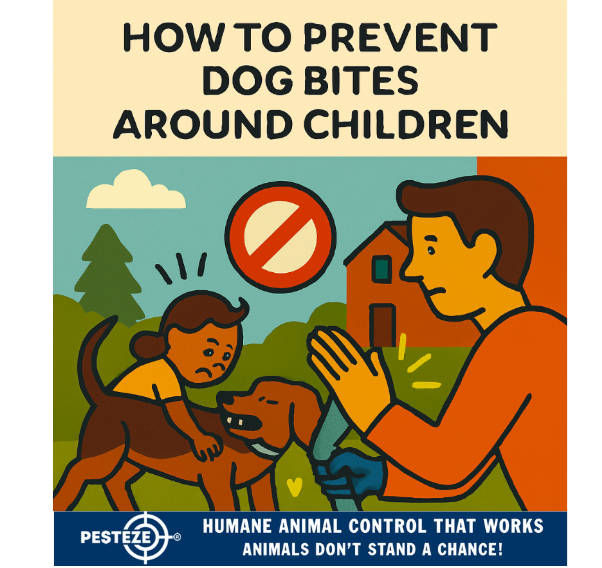HOW TO PREVENT DOG BITES AROUND CHILDREN

HOW TO PREVENT DOG BITES AROUND CHILDREN
SUMMARY
Dog bites are a serious concern, especially when children are involved. Most incidents occur during everyday interactions with familiar dogs, often at home. Teaching children how to behave around dogs and ensuring pets are properly trained and supervised can significantly reduce the risk. This guide outlines practical, expert-backed strategies to prevent dog bites around children, promoting safe and respectful relationships between kids and their canine companions.
FEATURES
-
Teach Children Dog Safety Basics: Educate kids on how to approach, pet, and interact with dogs respectfully.
-
Supervise All Interactions: Never leave young children alone with a dog, even if it’s a family pet.
-
Recognize Warning Signs in Dogs: Learn to spot signs of stress or discomfort like growling, stiff posture, or avoidance.
-
Avoid Rough Play and Teasing: Discourage behaviors that may provoke fear or aggression in dogs.
-
Socialize and Train Your Dog: Ensure your dog is well-socialized and responds reliably to basic commands.
-
Create Safe Spaces for Dogs: Provide areas where dogs can retreat when overwhelmed or overstimulated.
GUIDE DESCRIPTION
Preventing dog bites around children starts with education, supervision, and mutual respect. While dogs and kids can form deep, loving bonds, it’s important to remember that dogs communicate differently and may react unpredictably when stressed or provoked.
Begin by teaching children how to interact with dogs safely. They should always ask permission before petting a dog, let the dog sniff them first, and avoid hugging or grabbing. Explain that dogs may not enjoy the same types of affection humans do.
Supervision is critical. Never leave a child alone with a dog, regardless of the dog’s temperament or familiarity. Many bites occur during unsupervised play, especially when children unintentionally provoke the dog.
Recognize canine warning signs. Growling, lip licking, stiff body language, or retreating are signals that a dog is uncomfortable. Teach children to respect these cues and give the dog space.
Avoid rough play, teasing, or chasing games. These can trigger fear or defensive aggression, especially in dogs with limited socialization or past trauma. Encourage gentle, structured play instead.
Proper training and socialization are essential. Dogs should be exposed to various environments, people, and other animals from a young age. Basic obedience commands like “sit,” “stay,” and “leave it” help maintain control during interactions.
Finally, give dogs a safe space to retreat. Whether it’s a crate, bed, or quiet room, dogs need a place to decompress away from noise and activity. Respecting this space helps prevent overstimulation and potential aggression.
By fostering understanding and respect between children and dogs, you can create a safer, happier environment for everyone.
- Amy Chang


Comments 0